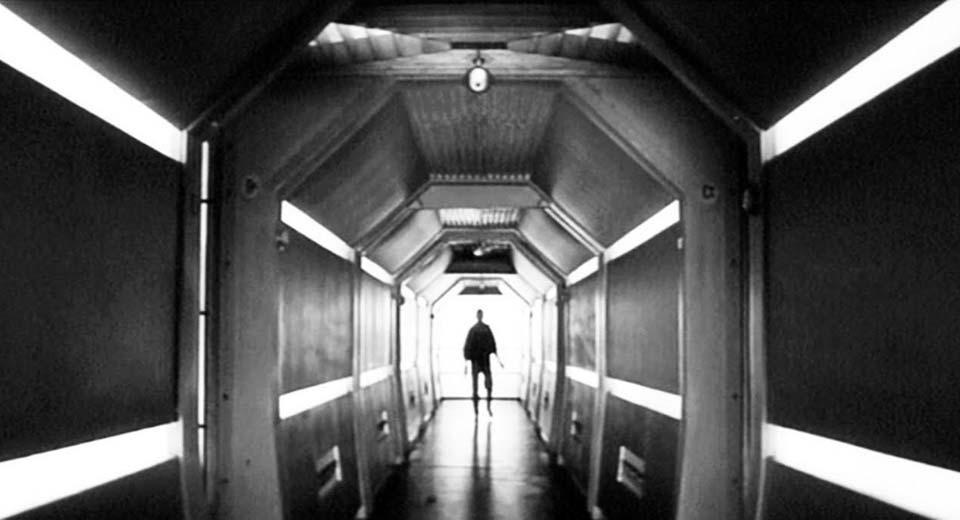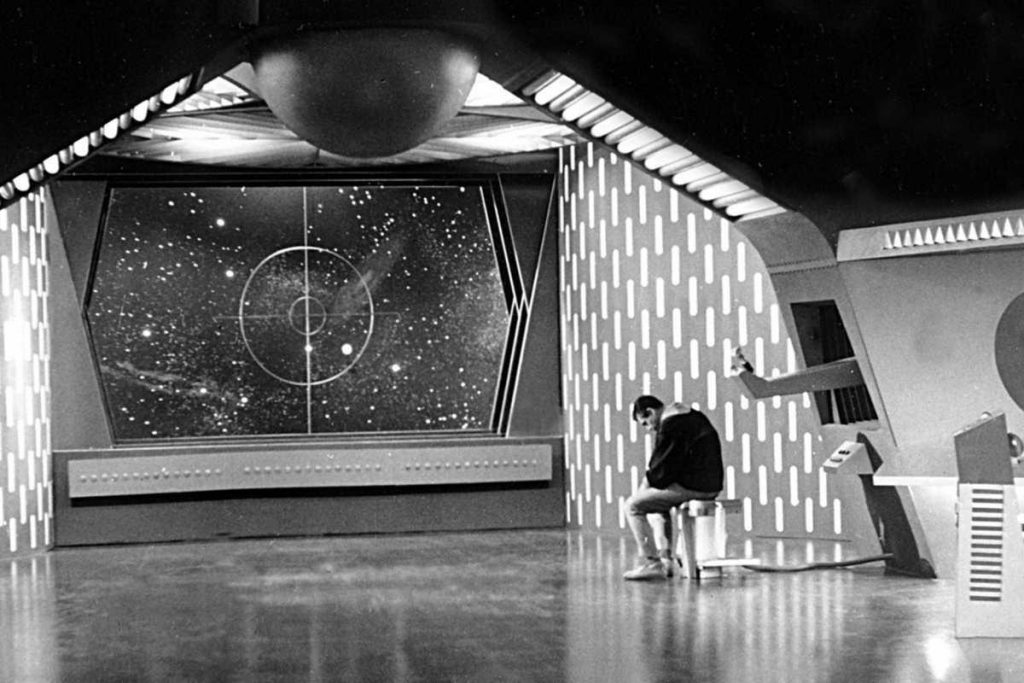
Global 25th-century astronauts (Dennis Stephans, Francis Smolen, Dana Meredith) find a death ship and a dark star as they seek a better planet.
| Reviewed by: Heng Wei Li
Ikarie XB-1’s reputation certainly preceded my viewing of it. While I had heard of it once or twice in my dives into more obscure sci-fi cinema, I gained renewed attention once I saw it programmed as part of this year’s Perspectives Film Festival. It was touted as one of the primary influences on Stanley Kubrick’s 2001: A Space Odyssey (1968), but I personally tried to go into it with an open mind, and what I received was definitely worthy of being restored and being put on the big screen.
Made in Czechoslovakia and directed by Jindřich Polák, Ikarie XB-1’s plot centres on the crew of the titular Ikarie XB-1 spaceship. It is the 22nd century, and the crew of the ship has been tasked to explore the “White Star” planet orbiting the star, Alpha Centauri. Throughout the journey, we get to know the various crew members and their own stories, as well as experience how the dark and infinite expanses of space affect human beings.
Ikarie XB-1 is a thoroughly unique film, clearly grabbing from the various cultural and socio-political happenings of the time to create a visual design and tone that effectively serves as the urtext for the grittier sci-fi that was to come in the late 70s. Its production and sound design are very much from the same cloth as the sleek space-age aesthetic that was predominant in science-fiction cinema during the 50s that are now retroactively seen as “campy”; oscillating beeps and woops are paired with spacesuits and spaceship interiors that have a “form-over-function” sleek appeal.
However, what makes this film stand out is that this look is turned on its head — the Czechoslovakian production imbuing the space-age look with a bleakness that only a country in the Eastern bloc could provide. The stark black-and-white cinematography replaces bright colour with sharp shadows, giving the sets a hint of murky unease, a sensation that certainly did not exist in the films that it is influenced by.
Perhaps even more striking than the visuals is a script that seeks to wash away any hint of glamour that space travel could provide, and in fact focuses more on the dangers that it could contain, along with any pertinent social commentary that could be found within. Most of the film’s runtime is spent with the crew, and we get to learn about their stories and worries. Whilst they might not be the most memorable cast in a science-fiction film, what they bring to the movie is something many films of its ilk lack: emotional depth. The acting is sincere, highlighting human fears and irrationality rather than something more high-concept, and this is also visible in its political commentary.
Ikarie XB-1’s mind seemed to be on the dangers of nuclear radiation, a concern that is more than probably influenced by the issues of the time; the Cuban Missile Crisis was less than a year ago at this point. It sombrely reflects on the 20th century, using the future to look at the present, but it ultimately is hopeful for a future that can surpass these worries. This is not anything particularly new; there had been science-fiction cinema prior to this that tackles serious subject matter; 1951’s The Day the Earth Stood Still comes to mind. What makes Ikarie XB-1 special is that it is a very rare film to do this, and has the emotional heft in the script and performances to stop it from becoming camp.
Ikarie XB-1 is very much a “beacon” in the history of a science-fiction film, a point in which we can clearly see the development of the genre before and after it. I highly recommend this film and consider it a necessary viewing for any fans of sci-fi, and I shall end this review with perhaps its most blatantly anachronistic plot point.
Brought by the crew is a robot called Patrick, a clunky humanoid machine that is considered obsolete by the film’s standards. Its design harkens back to the famous “Robby the Robot” from 1956’s Forbidden Planet, generally considered one of the best examples of the 50’s sci-fi film, in all its unintended camp glory. Near the climax, a crew member wrought into delirium by nuclear radiation shoots its dead, the very real fears of the “present” bringing down the fun of the past. _ Wei Li Heng is an avid lover of films, with a preference for uncovering and writing about obscure and underseen cinema. In particular, he has a penchant for the cinema of East and Southeast Asia. He hopes to discover cinematic gems throughout these local film histories and share them with a wider audience through his writing. |
Click Here For More Film Reviews
Do you love writing? Send us a film review and we will feature it on our website. Any film that people can see in the theater or online. Email to: media@scape.sg
This review is also published on Sinema as part of *SCAPE’s Film Critics Lab: A Writing Mentorship Programme.


